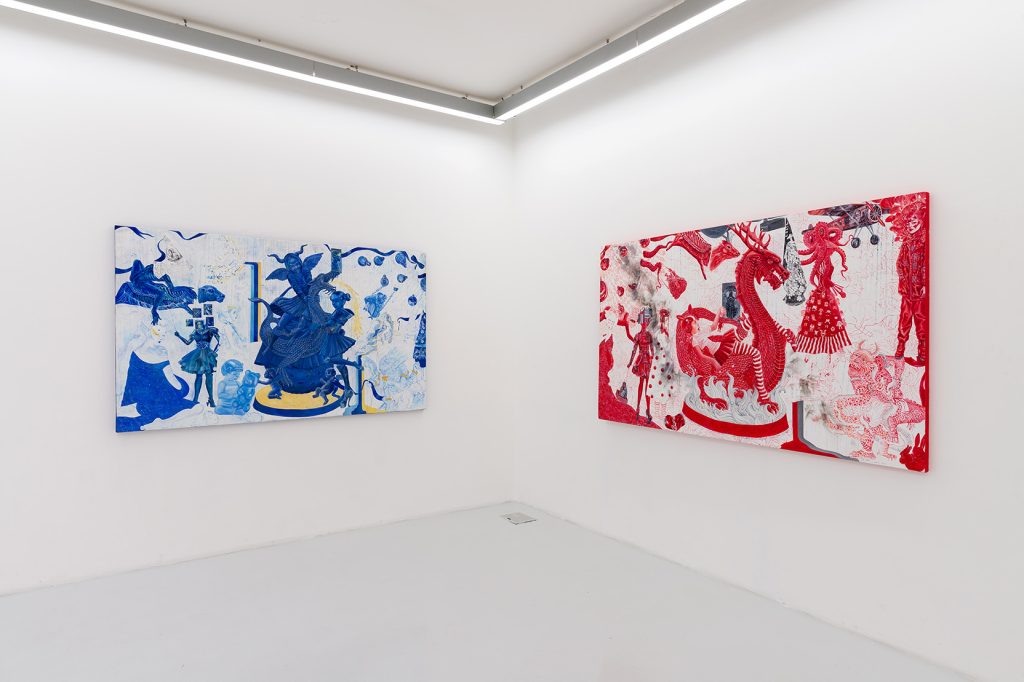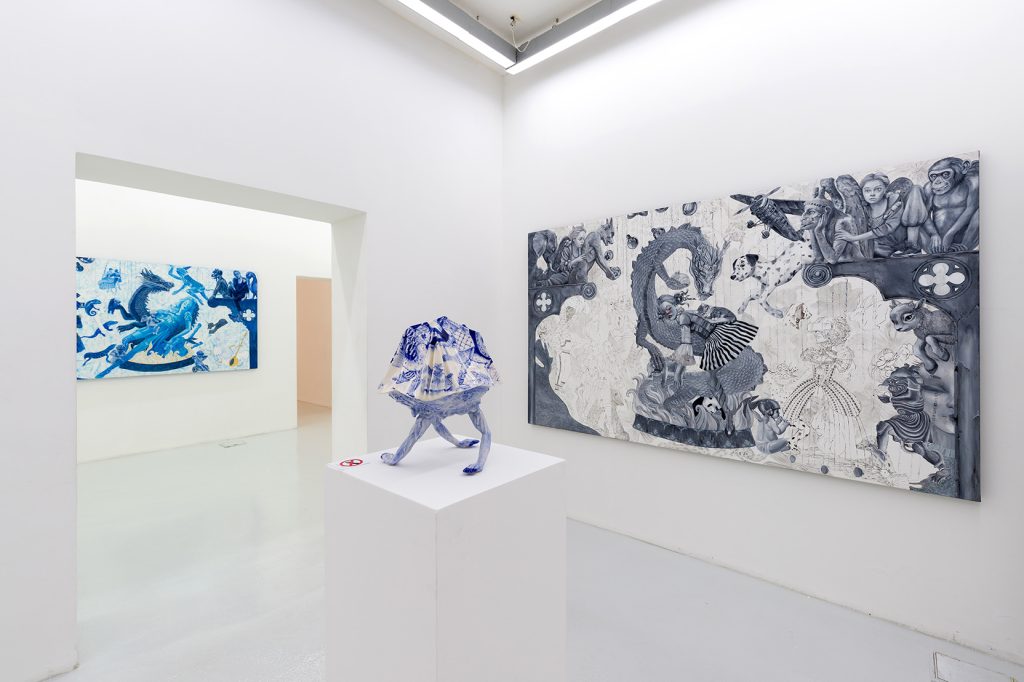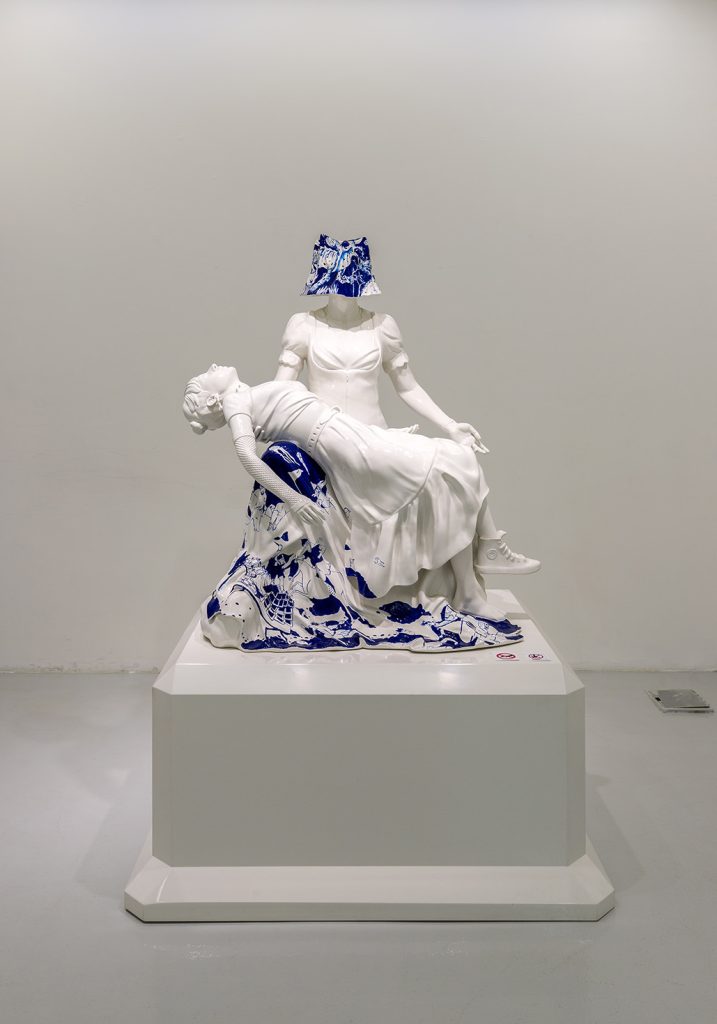RGB Escape | One person exhibition
Nafiseh Moeini
Soo Contemporary | Second Floor
May 24 until June 14, 2024
Plato’s cave is an important and fundamental allegory that he used to explain his “theory of forms,” referring to the imaginary nature of human perceptions and beliefs. From ancient Indian teachers to Enlightenment philosophers, from Rumi to Heidegger, and from Christian mystics to Hollywood screenwriters, everyone has wrestled with these ideas. In this series of self-portraits, Nafiseh Moeini, inspired by this idea, makes an attempt to reflect upon and consequently portray her lived experience. The result is the emergence of worlds, with each one hanging over time and space, as it were, like shadows on the walls of a cave.
There are two layers in Nafiseh’s paintings: in the first layer, we see the works of many small and large subjects, which are clearly and in detail. In this layer, while reinterpreting symbols of social events, the artist tries to create questions in the mind of the audience in order to search for a different reading of contemporary events and developments. This is while in the background, she went for more isolated elements and started creating opaque and illusory spaces with the inspiration of the four elements.
In her technical experimentation, Nafiseh remains faithful to the tradition of Iranian painting by removing shadings and maintaining the connection of her works to Plato’s ideal world. Meantime, the narrative quality of texts, which is one of the main characteristics of Persian painting, can also be observed. The use of texts is yet another reference to the Persian painting tradition; the style of execution and the diversity of language, however, refer to digital images and a matrix-like universe. The employment of printing techniques, as well as the somewhat forgotten “smoke technique” in painting, are among the artist’s other new experiments. All things considered, she does not limit herself to the medium of painting, and by presenting sculptures that are reminiscent of Safavid era ceramics, she tries to expand her scope of experience and explore new territories.
As the title of the show suggests, the works are presented in three colors: blue, green, and red, which refer to the three colors that make up the light on the monitor screen and the digital world. It seems that by allocating each work to one color, the artist seeks to depict the plurality in the material and digitalized world. She has made use of color in its mystical sense that symbolizes the polychromatic nature of the world: by freeing ourselves from worldly concerns, we will enter the realm of unity and the source of light. Nafiseh has presented her narrative of the world not only as shadows on the cave wall but also in a playful chromatic variation that ultimately returns to its origin, which is itself devoid of color.






